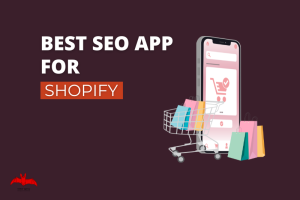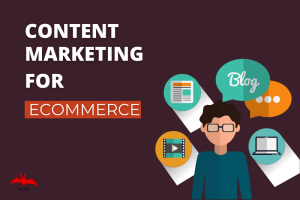Ecommerce is one of the biggest markets in the world, generating a staggering 5.8 trillion USD of revenue in 2023.
The fashion niche is one of the most promising ventures in the e-commerce niche. According to sources, Fashion eCommerce produced about $821.19 billion in 2023. (1)
But how do you get people interested in your shirts, shoes, pajamas, and blouses with so many rival online clothing stores? Well, you optimize your business to appease the big G and the masses.
Yes, by keeping Google happy and creating a platform that caters to the millions of online shoppers eagerly waiting to enter their credit card details, you will be well on your way to the virtual catwalk of your dreams.
Here are 5 of the most important SEO tips for fashion ecommerce businesses. Get them right, and you’ll be shipping blouses, scarves, and skirts all day, every day.
Tip #1 Audit your Fashion eCommerce Website
If you’re bored by the very idea of an audit (yawn), don’t worry – you’re not alone. But this first step is probably one of the more important steps you can take in your search engine optimization journey.
This is because an audit will help you identify any existing issues, which in turn helps you devise an efficient attack plan.
Using an SEO tool like Ahrefs will help you do the audit.
It scans every page it discovers on your website, then delivers an overall SEO health score, presents crucial data through charts, highlights all potential SEO problems, and offers guidance on resolving them.

Above is what a typical site audit looks like for one of our current SEO clients
Why is this an important step?
Because you need to understand where the snags are in your current website setup. Without knowing this, you’ll be shooting in the dark. Some of these issues will take a while to fix. You might have to change a bit of the internal structure of your website or redo the meta tags as they don’t make sense to Google’s algorithm.
However, some of the issues could also be easy wins. For example, you may need to add internal links to a certain page or change a heading to match an important keyword to rank higher.
The site audit will help you identify where the problems are and help you prioritize these issues. Before you spend time, money, and other resources on something that only needs a minor tweak, get a site audit done.
Tip #2 Conduct Keyword Research
To effectively optimize your pages, you’ll need to understand the main keywords your potential customers use when searching for the fashion products you sell.
For example, imagine you’re running an e-commerce store specializing in neck scarves, and you want to attract more organic traffic to your sales page.
This is what Google delivers when typing the simple keyword “scarves”
In this scenario, which keywords should you focus your page optimization efforts on?
Silk scarves and Winter scarves both seem like they could work for your website and if your store items accurately match both of those descriptions, the main question is, which of those keywords are most commonly searched on the internet?
To do this, use a tool like Ahrefs. Below is an analysis of the previously mentioned keywords.

Our research tool tells us that there are an average of 2400 and 900 searches, respectively, each month for silk scarves and winter scarves.
But wait – a third contender has entered the scarf race. “Hair Scarves” has a slightly higher keyword difficulty than winter scarves but a far greater search volume of 4400 searches each month.
In this scenario, you should prioritize the third option, with the difficulty being justified by the search volume.
If you need help understanding the search intent of your potential customers or need some advice on using the keyword research already done by your competitors, why not check out this explanation done by Gert Kulla via YouTube:
Long tail keywords are a specific set of search phrases that people are using within your niche. For example, people might not be searching for “silk scarves” only, but for “hand-painted silk scarves for spring”.
Knowing this, you can adjust your SEO strategy and write articles for your fashion blog to target these specific searches, helping you direct more organic traffic to your product pages in the long run.
Tip #3 Optimize Existing Pages
After determining the primary keywords for each product and category page, the next step is to ensure these pages are optimized to the fullest.
Effective on-page optimization reduces the need for external backlinks to rank well for a keyword. This will save you bucket loads in the long run, as you don’t have to invest as much in link-building campaigns.
One of the best tools that you can use to optimize existing service pages is called SurferSEO.
This tool examines the pages currently ranking at the top, analyzes the keywords, phrases, and subtopics they include, and identifies which elements are most correlated with high search engine rankings.
It provides specific recommendations for enhancing your pages. Don’t be alarmed when the program returns with a list of things you can improve. These suggestions are often easily implemented and will take you a few hours at most to complete, with each one increasing your online visibility.
You might have to add a few internal links to your product pages, add to or reduce the total number of words used, or address the overall page structure. These changes make your online fashion store more appealing to humans and search engines.
The only downside to this step is that most SEO platforms don’t always offer this capability on their free plan. This means that only paying subscribers will see the entire picture and fully understand what is needed to optimize existing service and product pages.
If you have a fashion ecommerce website but can’t currently justify the subscription fees to some or all of these SEO platforms, simply reach out to Redbat Agency and enquire about a site audit. We’ll be glad to help you out.
Tip #4 Start a Fashion Brand Blog
One of the best things you can do for your fashion brand is to keep a regular blog.

Canva / Getty Images Signature
Blogging about fashion-related topics helps you reach a wider audience and help your current audience understand more about your brand—especially if you understand the power of long-tail keywords, as mentioned earlier.
You’ve already done keyword research, so you know what phrases to use in a blog. Try to use the main keyword naturally in your H1 heading and similar keywords throughout your articles.
Structure your content appropriately by using H2, H3, and H4 formats, and make sure to keep your paragraphs short. Three or four sentences per paragraph should be more than enough to get the point across while keeping the article neat and easy to read.
Write about interesting subjects that you know your audience will enjoy reading. Make your blogs actionable and keep the content fresh. Avoid simply reproducing existing articles on the web.
Two important tools to use while writing your fashion blog are SurferSeo and Grammarly.
SurferSeo will help you understand which keywords are featured most often in articles for a specific search term and help you adjust how often you use them throughout your article.
By doing this and following whatever suggestions the program provides, the program will generate a score out of 100. The higher your score the higher the likelihood of that article being featured in the top ten of search engine results pages.
For every 300 or so words, use a relevant picture that will add to the overall experience and readability of the article.
A word of caution when it comes to blogging: Do not over-optimize your blog posts by stuffing relevant keywords in the hope that search engines will favor your articles. They won’t! Write your articles for humans who are interested in the fashion industry, not for algorithms and bots.
Grammarly will help you use the correct spelling and even suggest changes to sentence structure or paragraph wording. Using Grammarly makes your articles much more professional.
Remember: High-quality content + high-quality images = Enjoyable reading!
Tip #5 Be Mobile Friendly
Not feeling motivated to optimize your fashion website for mobile use?
At least 79% of smartphone users have made a purchase online using their mobile device in the last 6 months, and it’s estimated over 50% of all eCommerce purchases during the 2022 holiday season were made on a smartphone. (2)
Yes, optimizing your fashion eCommerce website for mobile friendliness is probably one of the smartest things that fashion brands can do to reach their target audience more frequently.

Canva / Getty Images
Here are steps to optimize your website for mobile use:
- Responsive Design: Implement a responsive design that adapts to various screen sizes. Use CSS media queries to adjust layout, font sizes, and image sizes based on the device’s screen width.
- Fast Page Load Times: Mobile users expect quick loading times.
- Optimize images, minimize HTTP requests, and leverage browser caching to improve page load speed. Tools like Google’s PageSpeed Insights can help identify performance bottlenecks.
- Mobile-Friendly Navigation: Simplify navigation for mobile users by using a clean, intuitive menu structure. Consider implementing a hamburger menu or sticky navigation bar to conserve screen space.
- Touch-Friendly Elements: Ensure clickable elements like buttons and links are large enough to be easily tapped on a touchscreen. Provide ample spacing between elements to prevent accidental clicks.
Other Important Steps
Besides these key steps, you can do a few other things to boost your SEO for fashion eCommerce.
PS! If you want to know more about the nitty-gritty of how to do all the ecommerce SEO by yourself, you could find a suitable ecommerce seo course from this list.
The following points are equally as important but often overlooked:
Make your site user-friendly
Making a fashion e-commerce website user-friendly can be as easy as grouping relevant products into one category. For example, if someone’s searching for a scarf, like in our example, avoid listing random items like shoes or socks on the same product page.
Easy-to-use navigation helps your customers find the checkout cart and complete a transaction. A user-friendly website will also help convert clicks to actual purchases.
Make good use of CTA buttons.
A well-designed and properly placed CTA button can excite, motivate, and encourage your customer to follow through with a purchase.
But the opposite is also true. A poorly designed and placed CTA will discourage window shoppers from becoming paying clientele.
Make sure your CTA’s are visible but not intrusive and that they use positive words like ‘complete purchase’ or ‘take me there’
Make your font easy to read.
One of the most annoying and counterproductive things you can do to your eCommerce site is use a font that is either too small or too difficult to read.
Product descriptions tell the reader more about what they’re buying. So, make this information accurate and easy to digest.
Conclusion
Although direct sales are still alive and well, online sales have become one of the mainstays for many fashion brands worldwide. Tasking the time to optimize your fashion ecommerce site will help you dominate the search engine results pages and make a success of your fashion ecommerce company.
Make sure that your fashion ecommerce website appeals to humans first and search engine algorithms second, and you’ll have a formula for success.
And if you’re a fashion brand that’s new to the party and simply doesn’t have the time, expertise, or energy to implement the tips discussed in this article, speak to an eCommerce SEO agency that has all the tools and knows how to implement an SEO strategy that will see you gain organic traffic that is ready to buy your products.
Article sources:
1 – Fashion eCommerce Statistics 2023
2 – Mobile eCommerce Statistics


